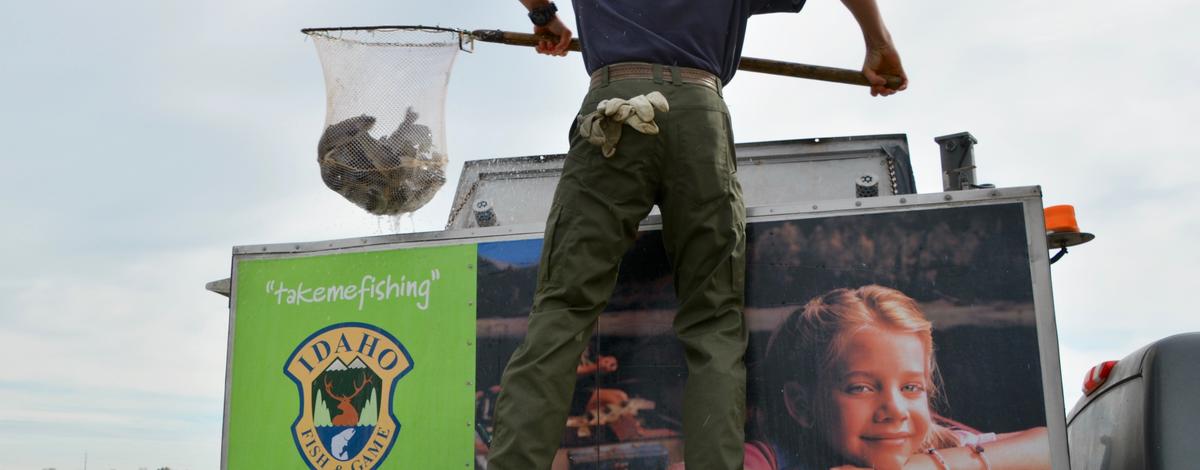
Do anglers prefer more trout or larger trout? Idaho Fish and Game is answering that question by providing both in 2018 and beyond.
Fish and Game will stock more rainbow trout throughout the state than in recent years thanks to the 2017 license and tag fee increase, and many trout will be bigger.
“Our hatchery managers were proactive and ordered more eggs last summer because they wanted to get more trout in the pipeline for this spring,” said Gary Byrne, Fish and Game’s fish production manager.
Stocking plans for 2018 call for about 123,000 more “catchable” rainbow trout (8 to 11 inches) and 41,000 more 12 to 14-inch trout commonly known as "magnums." Then in 2019, anglers will get 56,000 more catchables and 180,000 more larger trout compared to 2017 numbers. The 2019 stocking plan will provide the basis for subsequent future years.
The challenge of growing larger "magnum" trout is it takes more food and more time, so it will require extra months to get those larger trout ready to stock, but “a higher proportion of them are going to end up on angler’s hook,” Byrne said.

Fish and Game’s research has shown trout in the 12-inch range can be more cost-effective in some waters if you factor that they’re caught at a higher frequency than the smaller fish. So basically, anglers catch more of those trout, and they’re bigger.
Not only that, in Idaho’s productive lakes and reservoirs, those 12-inch fish will continue to grow after being stocked, and growth rates of an inch per month are common during the prime growing months, which means there will be more trophy-sized trout swimming in Idaho.
“In bodies of water where they can carry over through winter, we should see lots of bigger fish,” Byrne said.
That doesn’t mean all trout stocked will be the larger fish. Depending on the body of water, smaller “catchables” can also be caught at high rates, such as in community ponds, or other waters with high fishing pressure that leads to most of the fish getting caught. Fish and Game stocks trout so anglers can catch them. The fish are sterile, so incapable of reproducing.
Fish and Game stocks trout year round in some waters at low elevations with mild climates, then stocking starts ramping up throughout the state in the spring, which is followed by major stockings prior to peak angling times, such as spring and summer holidays. You can see where stockings take place on Fish and Game’s stocking report page.
Fisheries managers also stock a variety of fish beyond rainbow trout. For example, many of the kokanee salmon caught by anglers in large lakes and reservoirs are stocked as fingerlings. Same goes for high mountain lakes, which typically get an influx of fingerlings on a rotating basis every few years. Those stocking numbers will remain consistent.
Managers also occasionally stock brown trout, westslope cutthroat trout, Lahontan cutthroat, tiger trout (a brown/brook hybrid), and rainbow-cutthroat hybrids in waters around the state, but in much smaller quantities than rainbow trout.

